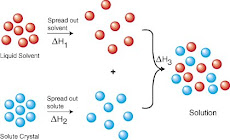Cleaning Products Go Green
While most household cleaning categories limp along, products promoted for their environmental benefits are posting double-digit gains.
Tom BrannaEditorial DirectorIn the long run, environmentally friendly household cleaning products may be good for the planet, but in the short term, they’re even better for a company’s bottom line. Why else would Clorox roll out Green Works, Church & Dwight introduce Arm & Hammer Essentials or S.C. Johnson scoop up Caldrea? The chart below shows how category sales have slipped during the past year, yet according to Information Resources, Inc., sales of Mrs. Meyers’ Clean Day Tub & Tile Cleaner jumped 225% and Seventh Generation’s glass cleaner surged 220%. The benefits and challenges of going green in the cleaning category were brought to light in a recent conference, “What’s New on the Clean Green Scene,” held Nov. 18-19 in Alexandria, VA. The conference was developed by Intertech Pira in association with The Soap and Detergent Association. “Sales of conventional cleaning products have declined, but natural cleaning product sales have risen,” noted Martin H. Wolf, director, product and environmental technology, Seventh Generation. Mr. Wolf pointed out that according to a recent Gallup Poll, last year 80-90% of Americans recycled or reduced energy use, while 73% purchased environmentally friendly products. There’s no denying that green products are here to stay, but as conference chair Brian Sansoni, VP-communications, The Soap and Detergent Association noted, there is much confusion among consumers, lawmakers and even marketers of finished products. After all, the term “green” is simply a marketing term, with no scientific basis. “We have to develop a sustainability message and make it meaningful,” observed Mr. Sansoni. Not long ago, household product marketers could perform a bit of market research, add a new surfactant and maybe a fragrance and tell the consumer to take it or leave it; that’s not the case any more. Today, purchasers are driving demand. “It’s no longer, I make it, you take it,” explained Bill Balek, director of legislative affairs, International Sanitary Supply Association (ISSA).
The same is true within government, as state and federal procurement policies increasingly call for green cleaners. In fact, 16 states have already adopted green cleaning procurement policies and six more are getting ready to introduce their own policies. The good news for industry is that as more states adopt green cleaning standards, they are often based on existing policies, so marketers don’t have to face disparate guidelines. At the federal level, there has been much activity even under a Republican president. President George W. Bush signed Executive Order 13423 that calls for a green procurement policy. Although that Order hasn’t been finalized, Mr. Balek predicts even more activity when President-elect Barack Obama takes office. “If you sell to the government, and they want a green formulation, you have to supply it,” added Mr. Balek. “And that has an indirect impact on consumer demand.” At the same time, more non-government organizations (NGOs) are having an impact on cleaning. One of them, Healthy Schools Campaign (HSC), is a driving force on the issue. HSC recently held a National Summit in Washington DC called, Green Cleaning for Schools. Other prominent NGOs include Hospitals for a Healthy Environment and the U.S. Green Building Council (GBC). Mr. Balek noted that there are 15,000 buildings in the country waiting to be certified by the U.S. GBC, and that cleaning plays in an integral role in the certification process. In fact, it can account for as much as 40% of a company’s score in certification. Demands for green cleaners are coming from the U.S. Department of Agriculture (USDA) too. The Farm Security and Rural Investment Act calls for the use of bio-based cleaning products, which, according to USDA, are more benign. The Act impacts a wide range of products including bathroom cleaners, carpet and upholstery cleaners, floor strippers, glass cleaners, graffiti removers, hard surface cleaners and general purpose cleaners. Marketers interested in getting their products approved for use by the USDA, should contact the department immediately, according to Mr. Balek. “Green cleaning represents a small (5-10%) portion of the market now, but growth is very strong—even in a down economy,” he concluded.
Consumers’ AttitudesUnfortunately, in the consumer market, when the chips are down and budgets are stretched, the environment often takes a back seat to economic woes, according to Pamela Helms, vice president-research and development, The Caldrea Company. In fact, in one recent study, 75% of Americans put the economy ahead of the environment. Still, Ms. Helms said the green movement is here to stay, even if consumers are suffering from a bit of “green fatigue.”
Pamela Helms, The Caldrea CompanyIn a study to learn how green values and lifestyles intersect, Caldrea found that there are several “shades of green” among consumers. They include: • It Ain’t Easy Being Green: These consumers say being green is too much to think about; • Sheer Green Tulle: These consumers buy what they like and if it’s green, then that’s a bonus; • Envy Silk Green: These consumers hope others notice how green they are; • True Blue Green: These consumers do the right thing for their family (and that often means buying green products); and • Into the Forest Green: These consumers are advocates leading the green cause. But regardless of how many consumers fit into each category, Ms. Helms insisted that the green movement is gaining strength. In fact, in the future, she predicted that, in the future, the term “green” will become irrelevant because it will become a cost of entry into the cleaning segment.
Yeah, But What Is Green?Green may be here to stay, but no company, agency or NGO has created a widely-accepted definition of green. That lack of a definition creates confusion among suppliers, marketers and consumers. But David Long, a consultant to the American Chemical Society, suggested that companies can get started on the right path toward green by following the 12 Principles of Green Chemistry, which were first suggested by Paul Anastas and John Warner in their 1998 book, Green Chemistry: Theory and Practice. The 12 principles are: 1. Prevent waste: Design chemical syntheses to prevent waste, leaving no waste to treat or clean up. 2. Design safer chemicals and products: Design chemical products to be fully effective, yet have little or no toxicity. 3. Design less hazardous chemical syntheses: Design syntheses to use and generate substances with little or no toxicity to humans and the environment. 4. Use renewable feedstocks: Use raw materials and feedstocks that are renewable rather than depleting. Renewable feedstocks are often made from agricultural products or are the wastes of other processes; depleting feedstocks are made from fossil fuels (petroleum, natural gas, or coal) or are mined. 5. Use catalysts, not stoichiometric reagents: Minimize waste by using catalytic reactions. Catalysts are used in small amounts and can carry out a single reaction many times. They are preferable to stoichiometric reagents, which are used in excess and work only once. 6. Avoid chemical derivatives: Avoid using blocking or protecting groups or any temporary modifications if possible. Derivatives use additional reagents and generate waste. 7. Maximize atom economy: Design syntheses so that the final product contains the maximum proportion of the starting materials. There should be few, if any, wasted atoms. 8. Use safer solvents and reaction conditions: Avoid using solvents, separation agents, or other auxiliary chemicals. If these chemicals are necessary, use innocuous chemicals. 9. Increase energy efficiency: Run chemical reactions at ambient temperature and pressure whenever possible. 10. Design chemicals and products to degrade after use: Design chemical products to break down to innocuous substances after use so that they do not accumulate in the environment. 11. Analyze in real time to prevent pollution: Include in-process real-time monitoring and control during syntheses to minimize or eliminate the formation of byproducts. 12. Minimize the potential for accidents: Design chemicals and their forms (solid, liquid or gas) to minimize the potential for chemical accidents including explosions, fires and releases to the environment. “Green chemistry can solve many of our problems,” Mr. Long insisted. “But we have to do a better job of educating future chemists about green chemistry.” To promote the value of going green, earlier this year, The American Chemical Society formed a Formulators’ Roundtable to get the cleaning industry to start thinking about going green. Ultimately, the group plans to develop a definition of green that’s based on the 12 Principles of Green Chemistry. “Our mission is to drive companies to use green chemistry,” he told the audience. Lauren G. Heine, senior science advisor, Clean Production Action, observed that together, green chemistry and innovation reduces risks by reducing hazards. “We’re all starting to pull in the same direction in terms of sustainability,” observed Dr. Heine. “It wasn’t like that 10 years ago.” She provided details on the U.S. Environmental Protection Agency’s Design for the Environment (DfE) program. When a product carries the DfE logo, that means that a DfE technical workgroup has screened each ingredient in the product for potential human health and environmental effects and that, based on currently available information, predictive models and expert judgment, the product contains only those ingredients that pose the least concern among chemicals in their class. Formulators interested in these chemicals, can view some of them at www.cleangredients.com.
Packaging ConcernsConsumers, government agencies and NGOs may be driving the green movement, but for many marketers, the 800-pound gorilla in the room is Wal-Mart. The world’s largest retailer may represent as much as 40% of a company’s annual sales. So when Wal-Mart wants something you can bet that its suppliers high tail it to Bentonville, AR. And what Wal-Mart wants more than just about anything these days is to be green. To get there, the retailer has issued a packaging scorecard that includes more than 200 data points per SKU that its suppliers must fill out to be in compliance. The scorecard is focused on four key data points: Material type (what packaging materials are used); Material weight (how much of each material is used); Material distance (how far the packaging component traveled before being filled) and Packaging efficiency (how efficiently available space is utilized). The goal is to reduce packaging costs by 5%. And woe be to any supplier that tries to skirt the issue. “Nobody is getting a free pass on this initiative, although bigger companies are able to file their data electronically,” insisted Victor Bell of Environmental Packaging International. For now, Wal-Mart is most concerned with amassing data. (And mirroring its often strong-arm tactics, if data for the laundry category is 70% complete, but your company has entered only 30% of its data, you can bet that Wal-Mart executives will want to know why you’ve fallen behind.) Further down the road, the retailer will take a closer look at the data to see how its suppliers have reduced packaging—and how it can profit from the reductions. For example, if a company has cut 10 grams of aluminum from a can, Wal-Mart will want a percentage of that savings. In fact, the company has hired Bloomberg to get regular reports on commodity prices. Now, Wal-Mart is getting ready to launch a Sustainability Index that will include a product-by-product ranking of the products it sells. Wal-Mart will use the index to evaluate its 60,000 suppliers and the hundreds of thousands of products that end up on store shelves. According to the company, 90% of the sustainability impacts associated with Wal-Mart come from the products it sells. But no matter how green you think your product is, Janice Podol-Frankle, an attorney with the Federal Trade Commission, reminded the audience that product claims must be truthful and non-misleading and that companies must be able to substantiate all claims. To help marketers with their green claims, the Commission issued Green Guides in 1992 and updates them periodically with input from industry (see www.ftc.gov/green). The guides’ general principles include: use clear and prominent qualifications; be specific, make clear whether claims apply to product, package or a component of either; provide clear comparative claims and don’t overstate a product’s attributes. For example, any package that includes seals or certifications should provide an explanation of what they mean. If a product includes a biodegradability claim, it must degrade at the same rate (or faster) than sewage. If the FTC rules that advertisements are deceptive, it may issue a cease-and-desist order, demand refunds to consumers or even disgorge profits to the U.S. Treasury.
Michelle Radecki, SDAAccording to Michelle Radecki, SDA’s general counsel, SDA provided input when the guides were first developed and is actively engaged in their current review. For example, SDA has suggested the use of environmental seals and logos must be specific, qualified and substantiated and the criteria should be transparent and readily accessible. SDA said the guides should be updated to encourage marketers to engage in more lifecycle thinking. New claims to be considered for the guides, according to SDA, include “natural” and “naturally-derived,” “organic” and “sustainability.” “The SDA will continue to participate in the current review of the Guides,” concluded Ms. Radecki. “Once they’re revised, we’ll educate our members.”
SEE A SURVEY RESULTS ON GREEN MANUFACTURING IN THE USA @ http://www.putman.net/brands/cp/downloads/cp_sap_green_survey_summary.pdf
martes, 16 de diciembre de 2008
AGAIN "GOING GREEN' FROM HAPPY DEC
Suscribirse a:
Entradas (Atom)
Vistas de página en total
GREEN CHEMICALS
The Green Seal certification is granted by the organization with that name and has a great number of members contributing with the requirements to pass a raw material or a chemical product as "green". Generally for a material to be green, has to comply with a series of characteristics like: near neutral pH, low volatility, non combustible, non toxic to aquatic life, be biodegradable as measured by oxygen demand in accordance with the OECD definition.
Also the materials have to meet with toxicity and health requirements regarding inhalation, dermal and eye contact. There is also a specific list of materials that are prohibited or restricted from formulations, like ozone-depleting compounds and alkylphenol ethoxylates amongst others. Please go to http://www.greenseal.com/ for complete information on their requirements.
For information on current issues regarding green chemicals, see the blog from the Journalist Doris De Guzman, in the ICIS at: http://www.icis.com/blogs/green-chemicals/.
Certification is an important — and confusing — aspect of green cleaning. Third-party certification is available for products that meet standards set by Green Seal, EcoLogo, Energy Star, the Carpet & Rug Institute and others.
Manufacturers can also hire independent labs to determine whether a product is environmentally preferable and then place the manufacturer’s own eco-logo on the product; this is called self-certification. Finally, some manufacturers label a product with words like “sustainable,” “green,” or “earth friendly” without any third-party verification.
“The fact that there is not a single authoritative standard to go by adds to the confusion,” says Steven L. Mack M.Ed., director of buildings and grounds service for Ohio University, Athens, Ohio.
In www.happi.com of June 2008 edition, there is a report of Natural formulating markets that also emphasises the fact that registration of "green formulas" is very confused at present, due to lack of direction and unification of criteria and that some governmental instittion (in my opinion the EPA) should take part in this very important issue.
Also the materials have to meet with toxicity and health requirements regarding inhalation, dermal and eye contact. There is also a specific list of materials that are prohibited or restricted from formulations, like ozone-depleting compounds and alkylphenol ethoxylates amongst others. Please go to http://www.greenseal.com/ for complete information on their requirements.
For information on current issues regarding green chemicals, see the blog from the Journalist Doris De Guzman, in the ICIS at: http://www.icis.com/blogs/green-chemicals/.
Certification is an important — and confusing — aspect of green cleaning. Third-party certification is available for products that meet standards set by Green Seal, EcoLogo, Energy Star, the Carpet & Rug Institute and others.
Manufacturers can also hire independent labs to determine whether a product is environmentally preferable and then place the manufacturer’s own eco-logo on the product; this is called self-certification. Finally, some manufacturers label a product with words like “sustainable,” “green,” or “earth friendly” without any third-party verification.
“The fact that there is not a single authoritative standard to go by adds to the confusion,” says Steven L. Mack M.Ed., director of buildings and grounds service for Ohio University, Athens, Ohio.
In www.happi.com of June 2008 edition, there is a report of Natural formulating markets that also emphasises the fact that registration of "green formulas" is very confused at present, due to lack of direction and unification of criteria and that some governmental instittion (in my opinion the EPA) should take part in this very important issue.










































